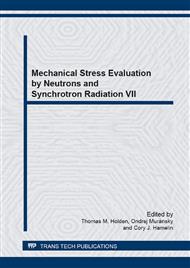p.40
p.46
p.52
p.58
p.65
p.71
p.78
p.84
p.92
Study of Asymmetric Rolling of Titanium by the Finite Elements Method with Implemented Crystalline Model
Abstract:
The goal of this work was to study the asymmetric rolling process using the Finite Element Method (FEM) coupled with the deformation model of polycrystalline material. The Leffers-Wierzbanowski (LW) model was selected to be implemented into FEM. This implementation enables a study of heterogeneous plastic deformation process, like asymmetric rolling, taking into account its crystallographic nature. The asymmetric rolling was realized using two identical rolls, driven by independent motors, rotating with different angular velocities. This enabled to obtain a controlled range of rolling asymmetry. Our aim was to examine the properties of asymmetrically rolled commercially pure titanium (Grade 2).
Info:
Periodical:
Pages:
65-70
Citation:
Online since:
February 2014
Price:
Сopyright:
© 2014 Trans Tech Publications Ltd. All Rights Reserved
Share:
Citation:


